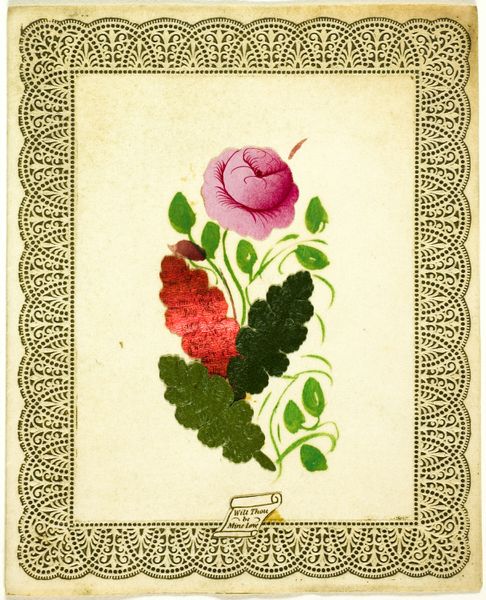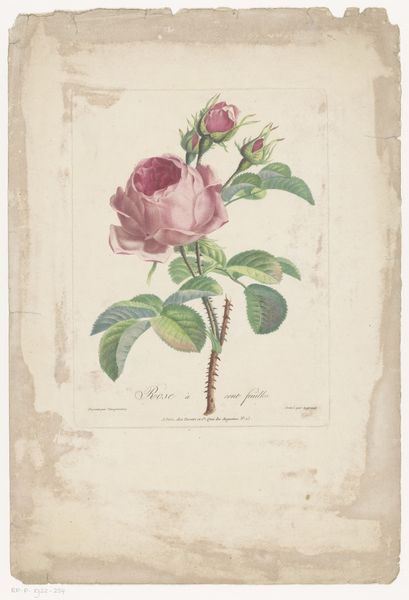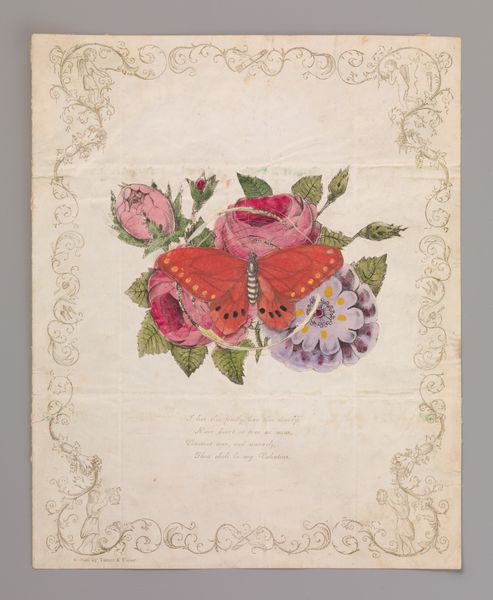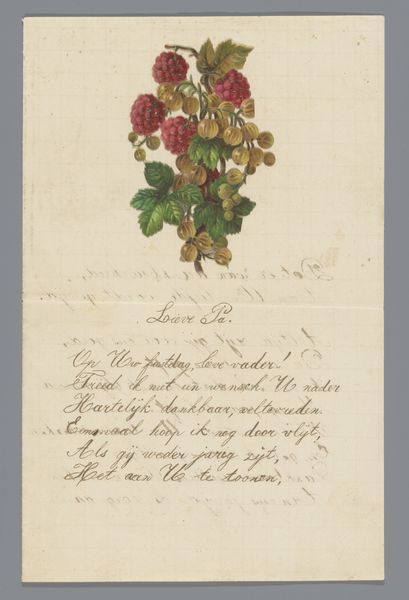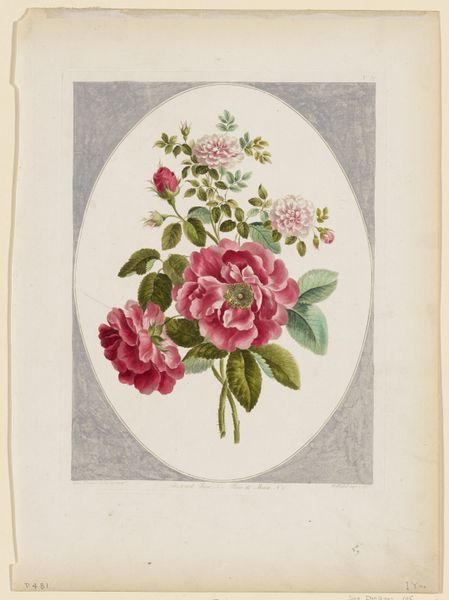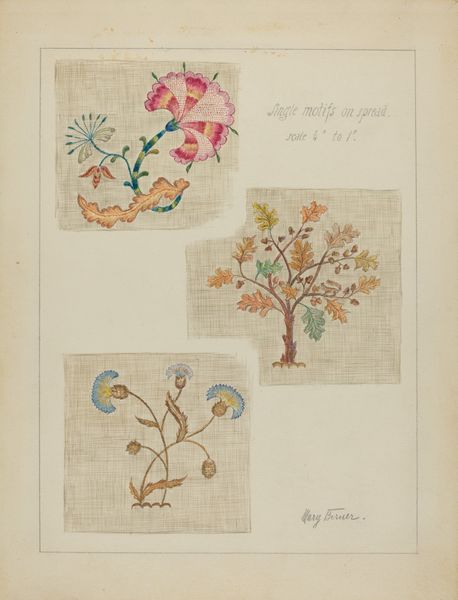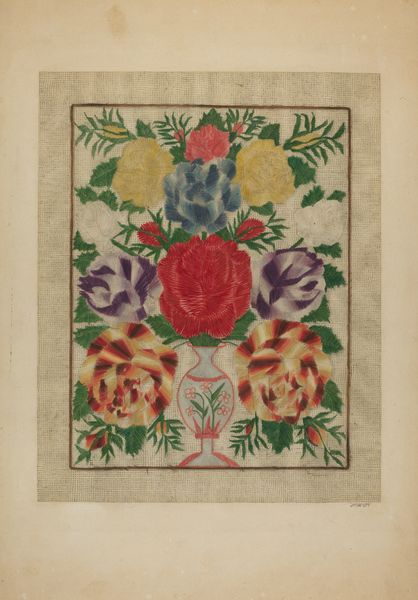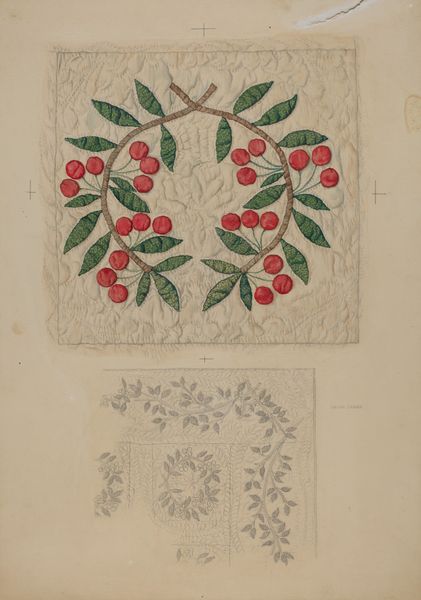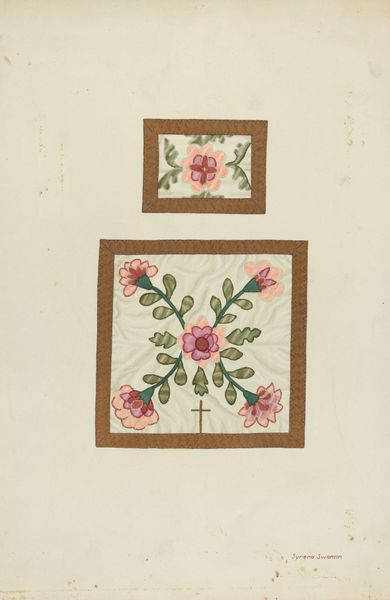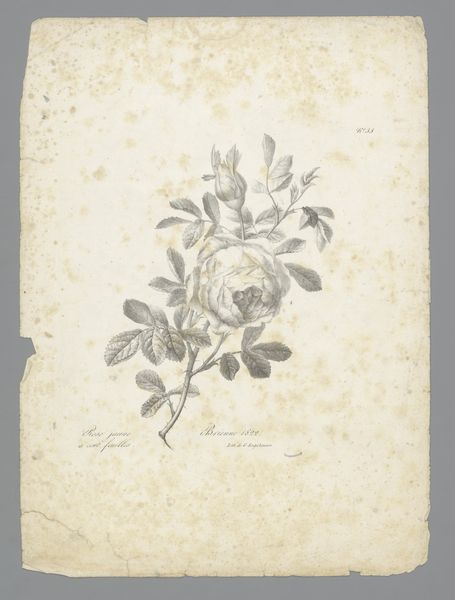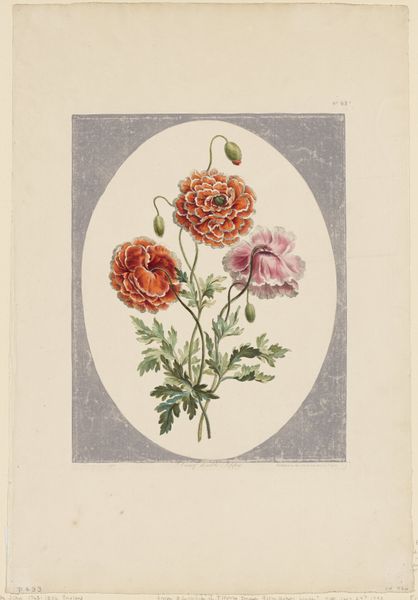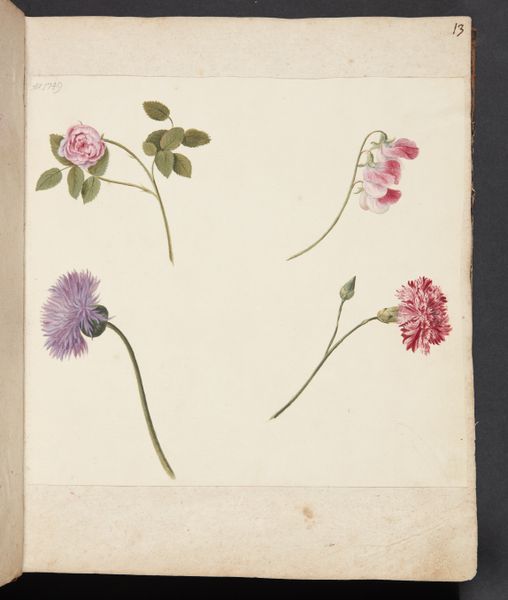
drawing, print, paper, watercolor
#
drawing
#
fairy-painting
# print
#
paper
#
watercolor
#
romanticism
#
watercolour illustration
#
genre-painting
#
decorative-art
#
miniature
Dimensions: 115 × 93 mm (folded sheet)
Copyright: Public Domain
Editor: This is "True Love's Fond Token (Valentine)," made with watercolor, drawing and print on paper. It’s undated and in the Art Institute of Chicago. The design feels delicate, almost fragile. What can you tell me about it? Curator: Well, let's think about the materials first. Watercolor and printmaking, often considered "minor" arts, are combined on paper – a mass-produced material. This challenges the hierarchy between fine art and decorative craft, doesn’t it? How does this mass production influence the meaning? Editor: I guess it makes it more accessible. It's not some unique oil painting, but something more people could potentially own or create themselves. Curator: Exactly! This brings up questions of labor and consumption in the 19th century. Valentines were increasingly popular, fueled by industrial printing and accessible postal services. What social roles do we see playing out with such items? Editor: So it’s not just a sentimental gift but evidence of shifting economic structures impacting intimate relationships. The democratization of print means affection could be commodified and mass-produced. But what about the artistry in the flower itself? Curator: I am interested in how the artist's labor connects to a larger market that seeks the “authentic” even within mass production. Can hand-painted elements within a printed border reconcile these two concepts? Perhaps it elevated a mass-produced object, conveying that true love required some level of handcrafted effort. Editor: It’s strange to think about how labor and love are linked in such a small object. I didn't realize a Valentine could have so much to say about social and economic change! Curator: Precisely. Everyday objects reveal much about larger structures, inviting us to think critically about both labor and affect.
Comments
No comments
Be the first to comment and join the conversation on the ultimate creative platform.
